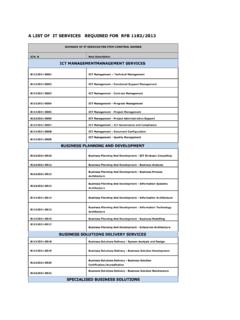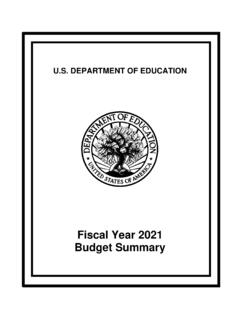Transcription of Agency rules - NHS England
1 NHS England and NHS improvement Agency rules June 2019 The NHS Long Term Plan says that when organisations work together they provide better care for the public. That is why on 1 April 2019 NHS improvement and NHS England united as one our aim, to provide leadership and support to the wider NHS. Nationally, regionally and locally, we champion frontline staff who provide a world-class service and constantly work to improve the care given to the people of England . 2 | Contents 1. Introduction .. 3 2. Organisations in scope .. 4 3. Staff groups in scope .. 6 4. Expenditure ceilings .. 7 5. Price caps .. 9 6. Mandatory use of approved framework 13 7. Use of admin and estates Agency workers .. 15 8. Tax .. 18 9. Overriding the Agency rules .. 19 10. Governance .. 21 11. Support.
2 22 12. Enforcement .. 23 Annex 1: Definitions .. 25 Annex 2: How the price caps are calculated .. 28 Annex 3: Trust reporting requirements .. 29 Annex 4: Seven pillars of the price cap .. 30 3 | 1. Introduction In 2015 trust spending on Agency staff had increased to the extent that it was one of the most significant causes of deteriorating trust finances. NHS Improvement1 introduced a set of rules in April 2016 to support trusts to reduce their Agency expenditure and move towards a sustainable model of temporary staffing. In the intervening two years these measures have reduced Agency expenditure by a third. This document sets out all the rules for trusts on Agency expenditure, which are collectively known as the Agency rules . It builds on and supersedes previous rules documents for trusts.
3 Trusts should refer to this document for details on how to comply with all the Agency rules , including the requirements to: comply with a ceiling for trust total Agency expenditure procure all Agency staff at or below the price caps use approved framework agreements to procure all Agency staff. The Agency rules apply to all staff groups (ie those listed in section 3). The Agency rules are designed to: significantly reduce Agency spend improve transparency on Agency and bank spend bring greater assurance on quality of Agency supply encourage Agency staff to return to permanent and bank working. 1 NHS improvement is the operational name for the organisation that brings together Monitor, NHS Trust Development Authority (TDA), Patient Safety, the National Reporting and Learning System, the Advancing Change team and the Intensive Support Teams.
4 From 1 April 2016 all references to Monitor or TDA have in effect been replaced by NHS improvement . This document therefore uses NHS improvement throughout. 4 | 2. Organisations in scope The Agency rules apply to: all NHS trusts NHS foundation trusts receiving interim support from the Department of Health and Social Care NHS foundation trusts in breach of their licence for financial reasons. Other NHS foundation trusts and NHS foundation trusts in receipt of financial recovery funding are encouraged to apply the Agency rules . Throughout this document 'trusts' refers to 'all trusts in scope of the rules ' unless otherwise specified. There is a strong expectation that all other NHS foundation trusts will comply. Year-to-date performance against Agency ceiling is an equally weighted metric in the use of resources theme of the Single Oversight Additionally, the proportion of temporary staff is measured quarterly in the quality of care theme.
5 Under the use of resources theme we may also consider whether there is any evidence that suggests a provider is failing to operate effective systems and/or processes for financial management and control, and not operating economically, effectively and efficiently. Providers that are not adequately controlling their Agency spend can be investigated under these broader value-for-money considerations. Ambulance trusts and ambulance foundation trusts have been covered by the Agency expenditure ceiling and framework rules since 1 April 2016 and by the price cap since 1 July 2016. While these rules apply to trusts and foundation trusts, commissioners have an important role in monitoring performance. We encourage trusts to work with their commissioners to agree plans for services in the event of staffing 2 Outlined in: 5 | issues and, where appropriate, to engage wider system partners in developing plans for sustainable temporary staffing across local systems.
6 6 | 3. Staff groups in scope The Agency rules apply to all staff groups covered by national pay scales: medical staff (including dental staff where applicable) nursing and midwifery staff all other clinical staff all non-clinical staff. GPs are not covered by the Agency rules , except where they would be employed substantively by a trust (that is, they are on the trust s payroll). Where this is the case, the appropriate equivalent medical price caps should apply. Very senior managers are not covered by this set of Agency rules . Separate guidance applies to very senior Please see Annex 1 for definitions of terms. 3 7 | 4. Expenditure ceilings NHS improvement sets expenditure ceilings on the total amount individual trusts can spend on Agency staff across all staff groups.
7 All trusts, including all foundation trusts, have a ceiling. The annual expenditure ceilings are set in collaboration with NHS improvement and NHS England regional teams. Each trust receives its annual ceiling as part of the annual planning round. Trusts with planned Agency expenditure above their annual ceiling will need to revise their plans to ensure Agency expenditure is at or below their ceiling. There is a strong expectation that all trusts will comply with this rule, and revise their plans to ensure Agency expenditure is at or below their ceiling where necessary. The monthly profile of a trust's ceiling should match the monthly profile of its planned Agency spend and be in line with wider trust activity and workforce plans. All trusts should therefore ensure that their planned monthly profile of Agency expenditure is robust.
8 A trust s year-to-date performance against its Agency ceiling will be monitored on a monthly basis through the trust s monthly data submissions to NHS improvement . All trusts will be held to account against their planned expenditure in line with the use of resources theme of the Single Oversight Framework. Ceilings are maximum levels, and trusts should reduce Agency expenditure below these levels as far as possible. Only in exceptional circumstances will an adjustment to individual trust ceilings be considered. Trusts should speak to their regional team or email for further guidance. 8 | When trusts merge, the ceiling for the new organisation is calculated by adding together the unspent ceiling across the two trusts; the spend trajectory for the remainder of the financial year is agreed with the new organisation.
9 The process is the same for an acquisition . NHS improvement and NHS England monitors Agency spend and may subsequently adjust trajectories and ceilings as appropriate, or as new data becomes available. 9 | 5. Price caps The price caps set by NHS improvement apply to the total amount a trust can pay per hour for an Agency worker. Trusts should not pay more than the price caps to secure an Agency worker, except in exceptional patient safety circumstances, referred to as break glass (see Section 9). The price caps apply when: an Agency fills a shift directly an Agency finds a worker to fill a shift, but the trust pays the worker directly for that shift and pays the Agency a finder s fee (all of this expenditure, including payment to the worker, fees and on-costs, should be classified as Agency expenditure) an outsourced bank provider releases an unfilled bank shift to be filled by an Agency worker (all expenditure, including payments to the worker, fees and on-costs paid to the Agency providing the worker, and any additional hourly or introductory fees charged by the bank provider, should be classified as Agency expenditure)
10 Workers are paid through their own limited/personal service company, including where workers are engaged via a third-party limited liability partnership, sole trader or an umbrella company. The price caps do not apply to: substantive/permanent staff bank staff (both in-house banks and outsourced banks) overtime payments to substantive/bank staff (eg waiting list initiatives) staff employed by a trust on a fixed-term contract. The price caps apply to all staff providing NHS services at the trust and to all specialties and departments, subject to paragraph The price caps also apply to Agency workers who are contracted on a sessional or fee-for-service basis. 10 | The price caps set are the maximum total hourly rate that trusts can pay for an Agency worker. The price cap is designed to ensure that Agency workers are paid in line with NHS substantive pay rates and comply with all regulations, including Agency worker regulations.















